2015! What a great year it had been for the smartphones! We have seen thousands of new phones launching in 2015, while some of the smartphones were unable to make their mark in the industry, others achieved a milestone through their sales record.
Like you might have encountered some unforgettable moments in the last year, there were some phones which will be never forgotten. While the flagship phones are always popular, there are many phones from 2015 which were offered in the budget segment and they had overtaken flagship phones in terms of their popularity.
So to give you a glimpse of some of the most popular phones in last year here’s the list of 25 Most Popular Phones of 2015 :
Samsung Galaxy S6 Edge+
Samsung’s flagship device of 2015 dubbed as Samsung Galaxy S6 Edge Plus is powered by Exynos 7420 processor with 4 GB RAM. The killer feature about this smartphone is its 5.7 inches curve edged screen with Super AMOLED display and a fingerprint scanner.
The Galaxy S6 Edge Plus boasts a 16 MP rear camera and 5 MP selfie snapper. It comes in 32 GB/ 64 GB storage variant and is backed by 3000 mAh battery. It is available from Rs. 52,499.
Apple iPhone 6S/ iPhone 6S Plus
Apple’s iPhone 6S Plus features a 5.5 inch of Full HD screen, while iPhone 6S flaunts 4.7 inches HD screen, both phone have Force Touch display technology. Both the smartphone runs on company’s own A9 processor with 2 GB of RAM. They features a 12 MP rear camera and 5 megapixel front camera.
The iPhone 6S and iPhone 6S Plus comes in 16/64/128 GB storage variant and the prices starts from Rs. 54,999.
Samsung Galaxy Note 5
The highlight of this phone was its S Pen Stylus and Samsung Pay. The smartphone sports a 16 MP rear camera and 5 Mp front camera and is backed by a 300 mAh battery. It is available from Rs. 46,700.
Lenovo K3 Note
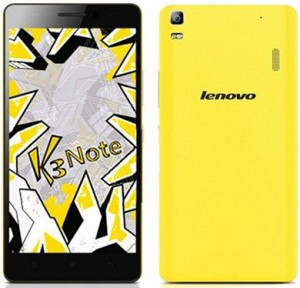
Lenovo K3 Note was the phone which exceeded the expectations of its users. The K3 Note flaunts a 5.5 inch of Full HD IPS display. It is powered by octa-core Mediatek MT6752 CPU with 2 GB of RAM and 16 GB of built-in memory.
The K3 Note sports a 13 MP autofocus rear camera with dual LED flash and 5 MP front camera. It also has Dolby Atmos sound speaker for better audio quality and this smartphone is available only at Rs.9,999.
OnePlus Two
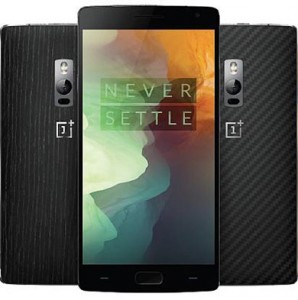
OnePlus Two was one of the most awaited phone last year. The smartphone features a 5.5 inch of Full HD IPS LCD screen. It is powered by Snapdragon 810 SoC and comes in two variants, one with 3 GB RAM and 16 GB storage memory, while another with 4 GB RAM and 64 GB storage memory.
OnePlus Two was the first phone to feature a USB Type-C device. It has 13 MP autofocus rear camera, 5 MP front camera and a fingerprint scanner. Its prices starts from Rs. 24,999.
Motorola Moto G (3rd Gen)
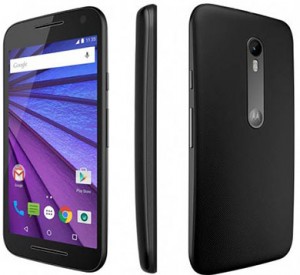
Every year there are some ‘must have’ phones, Motorola’s Moto G 3rd Gen was one of them. The smartphone features a 5 inches of HD screen and Qualcomm’s Snapdragon 410 quad-core processor under the hood. It comes in two variants, one with 1 GB RAM and 8 GB internal memory, while other with 2 GB RAM and 16 GB storage memory.
The Moto G 3rd Gen sports a 13 MP rear camera and 5 MP front camera. It is backed by a 2470 mAh battery and is available from Rs. 9,999.
Motorola Moto X Play
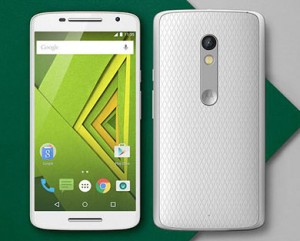
Motorola’s Moto X Play flaunts a 5.5 inches of Full HD screen and is powered by Snapdragon 615 SoC and 2 GB RAM. It comes in 16/32 GB storage variant with memory expansion slot up to 128 GB.
The Moto X Play got famous for its 21 MP rear camera with dual LED flash, and also has 5 MP front camera. It is backed by 3630 battery and is available at price tag of Rs. 16,999.
Asus Zenfone 2
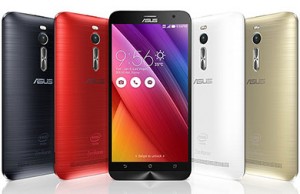
Asus Zenfone 2 features a 5.5 inches of Full HD screen and comes in many variants. The one which has 16 GB storage memory has Intel Atom Z3560 SoC with 2 GB RAM, whereas the others 32/64/128 GB storage variant has Intel Atom Z3580 SoC, paired with 4 GB RAM.
The Zenfone 2 houses a 13 MP dual flash camera at rear and 5 MP camera on the front. It is backed by a huge 3000 mAh battery and its prices starts from Rs. 13,999.
Huawei Nexus 6P
Huawei Nexus 6P was the first phone to run on Android 6.0 Marshmallow. The 5.7 inch screen smartphone runs Qualcomm’s Snapdragon 810 SoC along with 3 GB of RAM. The Nexus 6P sports a 12 MP dual LED flash rear camera and 8 MP front snapper.
The Nexus 6P comes in three storage variants, that are 32 GB/64 GB/128 GB with no microSD slot for storage expansion. The smartphone is packed by a 3450 mAh battery and features a fingerprint sensor. It is available from Rs. 39,999.
Sony Xperia Z5 Premium
The Xperia Z5 Premium boasts a 23 MP of rear camera and a 5 MP of front camera. The smartphone is backed by 3430 mAh battery with Quick Charge 2.0 support and a fingerprint sensor. It is now available at the price of Rs.57,240.
Asus Zenfone 2 Laser
Asus Zenfone 2 Laser was one of the most successful budget phone. The smartphone flaunts a 5 inch of HD screen and is powered by Snapdragon 410, paired with 2 GB RAM. It has 8 GB and 16 GB storage variants with microSD slot for storage expansion up to 128 GB.
The Zenfone 2 Laser sports a 13 MP laser autofocus rear camera and 5 MP front facing camera. The dual SIM smartphone is packed with 2400 mAh battery. Its prices starts from Rs. 9,999
Nexus 5X
Last year, Google introduced two Nexus phones, one from Huawei and another from their veteran ally LG. Although, it was LG’s Nexus 5X who prevailed the Huawei’s Nexus 6P. The LG Nexus 5X flaunts a 5.2 inches of Full HD IPS LCD screen and is powered by Snapdragon 808 SoC, paired with 2 GB RAM. It comes in 16/32 GB storage variant.
The Nexus 5X sports a 12 MP rear camera, 5 MP front camera and a fingerprint sensor. The phone supports USB Type-C connectivity and is backed by 2700 mAh battery. The prices for LG Nexus 5X starts from Rs. 20,999.
LG G4
LG G4 comes with a 5.5 inches of QHD IPS screen and is powered by Snapdragon 808 quad-core processor. It has 3 GB RAM and 32 GB of built-in memory.
The G4 sports a 16 MP rear camera , 8 MP front camera and is backed by 3000 mAh battery. The price for the LG G4 starts from Rs. 35,435.
HTC One M9/ M9+
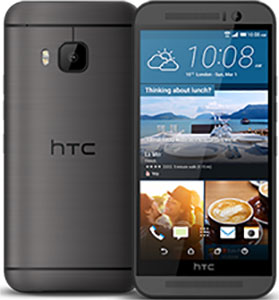
The March released phone HTC One M9 features a 5 inches of Full HD screen whereas M9+ features a 5.2 inches of screen with resolution of 1440 x 2560 pixels. Both are powered by Snapdragon 810 processor, paired with 4 GB RAM. It has 32 GB of inbuilt memory with storage expansion slot.
The HTC One M9/M9+ sports a 20 MP rear camera and 4 MP front camera. The smartphones are backed by 2840 mAh battery and price of these phones starts from Rs. 40,775.
Xiaomi Mi4i
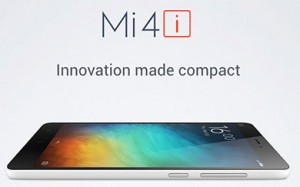
Xiaomi’s Mi4i comes with a 5 inches of Full HD IPS LCD screen and is powered by Snapdragon 615 SoC and a 2 GB RAM. It comes in 16 GB/ 32 GB storage variant.
The Android running dual SIM smartphone features a 13 MP rear camera and 5 MP front camera. It is backed by a non-removable 3120 mAh battery and the prices for the device starts from Rs. 11,999.
Yu Yureka Plus
Yu Yureka Plus was another a great package from Yu Televentures, the Indian manufacturer. Yureka Plus had a 5.5 inches of Full HD screen and is powered by Snapdragon 615 CPU, coupled with 2 GB RAM and has 16 GB of internal memory.
The Yureka Plus has 13 MP rear camera and 5 MP front camera. It is packed with a 2500 mAh battery and is available for Rs. 11,380.
Xiaomi Redmi 2 Prime
Redmi 2 Prime was another great entry-level budget smartphone by Xiaomi. The smartphone has a 4.7 inches of HD screen and is powered by Snapdragon 410 SoC, paired with 2 GB RAM. It also has 16 GB of internal memory.
Xiaomi Redmi 2 Prime sports a 8 MP rear camera, 2 MP front camera and is backed by 2200 mAh battery. The smartphone is available at a price of Rs. 6,999.
Yu Yuphoria
It was a great year for Yu Televentures, a subsidiary brand of Micromax Mobiles, as their smartphones delivered more than expected. Yu’s Yuphoria was one of them, that carries a 5 inches of HD screen with IPS LCD display. It is powered by Qualcomm’s Snapdragon 410 SoC and 2 GB RAM. It also has 16 GB of internal memory storage, expandable up to 32 GB.
The Yuphoria houses a 8 MP autofocus rear camera, 5 MP front snapper and 2230 mAh battery. It is available at price tag of Rs. 7,879
OnePlus X
Just like OnePlus Two, OnePlus X was huge success in 2015. The OnePlus X flaunts a 5 inch of Full HD AMOLED screen and is powered by Snapdragon 801 processor and 3 GB RAM. It has 32 GB of internal memory storage, expandable up to 128 GB.
The One Plus X sports a 13 MP rear camera and 8 MP front camera. It is backed 2525 mAh battery and is available at Rs. 16,999.
Yu Yunique
Yu Yunique brought a revolution in smartphone industry, as it packed some interesting features at great price. The smartphone comes with a 4.7 inch of HD screen and is powered by Snapdragon 410 quad-core processor with 1 GB RAM and 8 GB internal memory. It also 4G connectivity.
The Yunique sports a 8 MP rear camera and 2 MP front snapper.It is backed by 2000 mAh battery and is priced for Rs. 6,400.
Yu Yutopia
Yu Yutopia was the flagship device of the Yu Televentures last year, that flaunts a 5.2 inches of IPS LCD display with screen resolution of 1440 x 2560 pixels. The smartphone is powered by Snapdragon 810 octa-core SoC, coupled with 4 GB RAM. It has 32 GB of built-in memory, expandable up to 128 GB.
The Yutopia boasts a 21 MP of autofocus rear camera, 8 MP of front camera and a fingerprint sensor. It is backed by 3000 mAh battery and is available for Rs. 24,999.
Lenovo A6000 Plus
Lenovo A6000 Plus was one of most sold phones in 2015, due to its overall specs and exciting price. The A6000 Plus flaunts a 5 inch HD screen with resolutions of 1280 X 720 pixels. It is powered by Snapdragon 410 quad-core processor, paired with 2 GB RAM and 16 GB internal memory.
The A6000+ boasts a 8 MP rear camera and 2 MP selfie snapper. It is backed by 2300 mAh battery and is available at a price of Rs. 7,499.
Coolpad Note 3
The Coolpad Note 3 was one of the most spectacular phone in previous year, all due to its extensive features. The Note 3 features 5.5 inches of IPS HD display. It is powered by Mediatek MT6753 octa-core processor, coupled with 3 GB RAM. It comes with a 16 GB in-built memory, expandable up to 64 GB via micro SD card.
The Coolpad Note 3 sports a 13 MP autofocus rear camera, 5 MP front camera and a fingerprint scanner. The dual SIM smartphone is backed by 3000 mAh battery and is priced for Rs. 8,999.
Samsung Galaxy J7
Samsung has launched many mid-budget phones like J5, On5, On7,etc., but Galaxy J7 was the one who was remarkable in previous year. The Galaxy J7 comes with a 5.5 inches of HD screen. It is powered by Snapdragon 615 CPU, coupled with 1.5 GB of RAM. It has 16 GB of internal memory, expandable up to 128 GB.
The Samsung Galaxy J7 boasts a 13 MP rear camera and 5 MP front camera. It is backed by massive 3000 mAh battery and is priced for Rs. 14,999.
Microsoft Lumia 950 XL
Microsoft Lumia 950 XL was perhaps the only Windows OS running smartphone which got popular last year. The Lumia 950 XL features a giant 5.7 inch QHD screen. The Windows 10 smartphone is powered by Snapdragon 810 quad-core processor, paired with 3 GB RAM and 32 GB internal memory.
The Lumia 950 XL houses a 20 MP Carl Zeiss rear sensor and 5 Mp camera on the front panel. It is packed with a non removable 3340 mAh battery and is available for Rs. 43,999.
We know there are still many popular phones like the Huawei Honor 4X/7, the BlackBerry Priv, the Moto E (2nd Gen), the Obi Worldphone SF1, the QiKU Q Terra, the HTC One A9 or the Samsung Galaxy A8 (and the list goes on……) which are not in this list but, as we had to choose only the Top 25 we had to take some hard decisions. If you believe any of these phones or some other phone should be in the list of 25 Most Popular Phones of 2015, let us know via the comments section below.
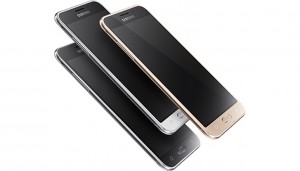
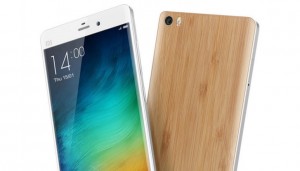

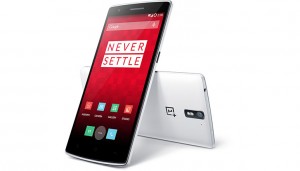






0 comments: